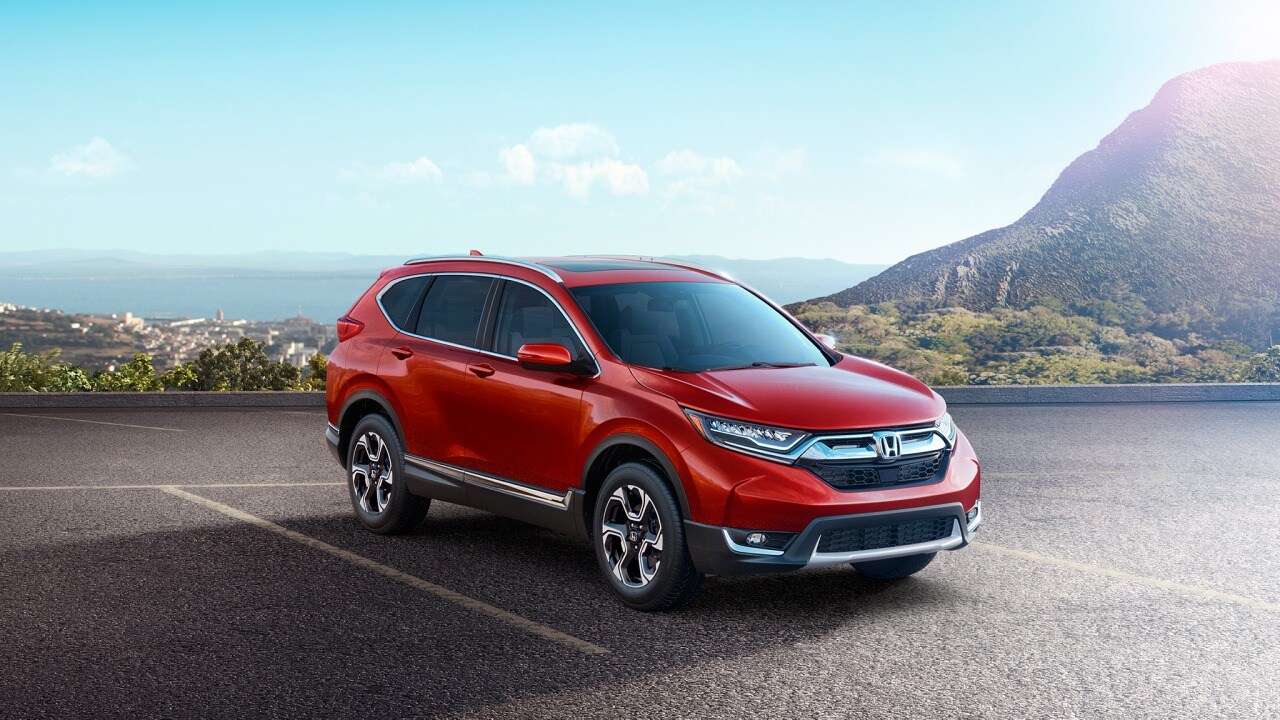For 2017, the CR-V is all-new, but its recipe hasn't changed a
bit. It remains a compact crossover with surprisingly good room for five. Base
LX models essentially carry over the previous generation's 2.4-liter
4-cylinder, but all other trim grades (which Honda says should represent about
75 percent of the model's sales) utilize a turbocharged 1.5-liter 4-cylinder
plucked from the Civic range. In the CR-V, it's rated at 190 horsepower and 179
pound-feet of torque, meaning it is slightly peppier than the engines that
power base versions of most rival motors.
Both engines are mated exclusively to continuously variable
transmissions (CVT) and they offer a choice between front- and all-wheel
drive. The turbo motor shaves about a second and a half from the non-turbo's
0-60 mph sprint, but it feels much peppier in practice.
Although the engine bay represents one of the CR-V's biggest
changes, its expanded interior capacity shouldn't be forgotten. Honda only
stretched the new model a little overall, but it feels much roomier
inside. Of particular note is its cargo area, which now stretches a full 5 feet
long with the second row folded. Likewise, the model's dashboard is more
conveniently-arrayed than before. We're especially happy that all models once
again boast a volume knob instead of a silly and difficult-to-use slider
knob.
On the safety front, all but the base CR-V LX include the brand's
Honda Sensing collision avoidance tech—adaptive cruise control, automatic
emergency braking, and lane departure warning.
Honda CR-V history
During its prior generations, the CR-V evolved
from a softer—but still very basic—alternative to truckier vehicles like the
Suzuki Sidekick and Jeep Wrangler into more of a family-oriented people-mover.
It has seen great success with that transition, helping to kick-start the small
crossover segment that continues to grow.
The first CR-V (1997–2001) was like other
early crossovers; a more plain-looking vehicle that bore a strong resemblance
to the old Honda Wagovan. It was equipped with a 4-cylinder engine then, like
it has now. The CR-V quickly earned a following for its great visibility and
durability, if not necessarily for its visual appeal.
The second-generation CR-V, sold from 2002,
was a significant improvement in nearly every way—much more refined,
responsive, and comfortable. These models all have a 2.4-liter 4-cylinder
engine, making about 160 hp, with most of them hooked up to a 4- or 5-speed
automatic transmission (a 5-speed manual was also offered).
Safety has generally been a selling point for
the CR-V. In a mid-cycle refresh for 2005, Honda increased the CR-V's safety
content, making side airbags and anti-lock brakes standard across the line,
which improved that model's IIHS side-impact results from a mediocre
"Marginal" to the top "Good" result. The CR-V's scores in
federal government crash tests have been generally good.
For 2007, Honda completely redesigned the CR-V
again, with that generation quite a bit more passenger-focused than the
previous generation. That redesign gave it an interior feel that was more like
that of a tall wagon or—gasp—a minivan. One odd attribute of the first- and
second-generation CR-V models is the externally mounted spare wheel and tire;
for the 2007 redesign, Honda finally relocated the spare from its perch on the
hatch. In the same generation, the interior design became more advanced and
well-appointed.
The changes made to create the
fourth-generation CR-V for the 2012 model year were more evolutionary than with
previous generations, at least on the outside. Inside it feels a bit different,
with upgraded materials and trims, along with an instrument panel that's in
line with the latest Odyssey van's, and an even better rear-seat mechanism that
allows you to fold the seats neatly forward with one hand—without the need for
power systems.
The engine was carried over initially, but the
5-speed automatic offered in 2012–2014 models received taller ratios, helping
the model achieve better gas-mileage ratings, according to the EPA. Overall,
the driving experience is nothing to get excited about, and while the CR-V
rides well and is reasonably responsive, the new electric power steering system
here fails to give the crisp, confident-handling feel the model had in the last
generation.
Honda has updated the CR-V's connectivity in
the most-current generation. Bluetooth hands-free connectivity and Bluetooth
streaming audio are at least standard across the entire model line, Pandora
streaming is integrated with the system (if you have the right smartphone), and
a new multi-information display can show personal pictures as well as the feed
from a new rearview camera system.

The CR-V received an extensive upgrade for
2015. Styling was tweaked, and there was a new 4-cylinder engine mated to a CVT
borrowed from the Accord that replaced the 5-speed automatic. The result was
improved fuel economy and slightly better acceleration. The front end featured
a much more modern, upscale look, while the rest of the exterior received some
other small touches. Honda also gave the interior a once-over, improving
materials and modifying the layout slightly.
No comments:
Post a Comment